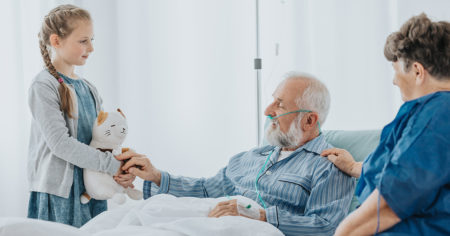June 30th, 2021
Home Oxygen Safety Tips

Medical oxygen is prescribed by a doctor at a specific level to treat breathing issues from various disorders, and this therapy can greatly improve one’s quality of life. However, oxygen greatly increases fire risk, so you must exercise great caution when this therapy is used in the home.
Oxygen by itself is not a flammable gas and it will not explode, but it reacts violently with combustible materials; if something catches fire, oxygen makes it burn much faster. Using medical oxygen in the home increases the amount of oxygen in all textiles, upholstery, clothing, and hair, making it easy for a house fire to start and spread.
If you care for someone who uses medical oxygen, put these safety tips into practice:
- No one who smokes should ever be near an oxygen container. There is no safe way to smoke in a home where medical oxygen is being used.
- Stay at least 15 feet away from any open flame. This applies not only in the home, but also in public places like a restaurant that may have features such as an open-kitchen layout, candles at the table, and outdoor firepits.
- Keep medical oxygen away from anything with an electric motor, such as toys, electric baseboard or space heaters, hairdryers and other handheld tools, and electric blankets. Though rare, it’s possible that any of these items can malfunction and cause a spark that would ignite the oxygen.
- Never use aerosol sprays containing combustible materials near the oxygen.
- Ensure the home has working smoke detectors. Plan and practice a fire-escape plan.
- Do not use petroleum- or oil-based lotions or lip care, as these can react violently with an oxygen-fueled fire.
- The kitchen is a major hazard area for an individual using oxygen. Microwave cooking is generally okay, if you follow the manufacturer’s instructions (i.e., metal in the microwave = sparks and fire). Dangerous activity includes cooking with grease or oil, which easily splatters.
- Never use or store oxygen in a confined space like a closet.
Fire danger is not the only concern with oxygen therapy at home. Tripping on tubing is another risk, especially for elderly persons who may be unsteady on their feet and/or have diminished muscle strength to help correct a stumble. Awareness of the tubing’s presence is the main remedy. Taping the tube to the backside of the user’s shirt may help preserve freedom of movement.
